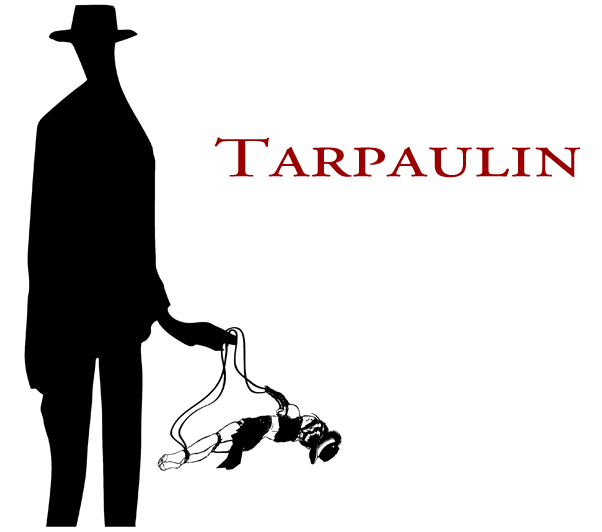Richard Froude
Fabric
ISBN 9780982989609
Horse Less Press, 2011
107 pages, paperback
$15.00
Reviewed by Megan Burns
Fragmenting the Book of Memory
Richard Froude’s Fabric is a journey into the making of songs and the weaving of subtle textures that amuse and disorient the reader. Subtitled “A Prelude to the Last American Book,” Froude tests the edges where lyric meets narrative and where structure has the freedom to dance into disarray. The word “prelude” is a loaded starting point as the reader sets off to define this text in relation to an unknown: does prelude in this sense mean as in music, a short piece free in style, or is it a nod to Wordworth’s Preludes, or is the phantom text of the Last American Book truly haunting this book. The answers are probably all of the above as Froude’s technique is quite similar to Susan Howe’s The Birth-Mark, where disparate impressions, images, and histories are brought together to tell a story, and part of the story is how the story makes itself on the page.
What is riveting about Froude’s book is that the reader vicariously enacts the shaping of the story as Froude pulls certain threads until the whole cloth emerges into a tapestry that was previously hidden from view. If the reader was able to anticipate Froude’s map, then the whole gig would be up, but Froude moves the pieces as deftly as a chess player caging the king. Fabric is a book concerned with sequences and patterns, and so the chess metaphor is apt. Froude uses recurring moves to introduce, turn the text, and then turn it again, all the while keeping the reader engaged in this exploration of where language and memory can take us. Froude writes: “Maybe one day everything will be collected in sequence and bound with leather (10).” and later, “Any arrangement can be perceived as a sequence (18).” These lines are clues to the reader to set stake in the words as they are laid out and then repositioned on the page.
Another book that comes to mind reading Froudeis Bernadette Mayer’s Memory; Froude, like Mayer, has an ability to clearly animate the past while remaining cognizant of the layers and gaps. It is in these layers and gaps that Fabric moves beyond storytelling to create a journey into history and memory where we find links and crossovers that truly are mysterious. Many books handle subjects like suicide, death, or loss; Fabric does it by taking the reader into unfamiliar territory and then creating a landscape like a code that the reader can break: “All I want is for the echoes to find their origin…This is my affair with language (35).” The story sets out a sequence, but how we break the code depends on what we hide in our internal translations. Froude links his text to the body: “It is almost impossible to completely remove redundancies from a sequence. They are present even in coded strands of DNA (32).” Froude again here is turning sequences and codes back into the body and into the text and then allowing the reader to interpret and assemble.
If the first two sections, Type and Contexture, can be viewed as a template to reading patterns; then the last two sections, The Dashes and Oceanography, embody this thought. Earlier motifs will be stripped bare while new patterns and codes are under constant construction; it’s a straight drop from the initial dissent into Froude’s dizzying array of connections and correlations. The Dashes is described as a silent movie or a dream, and it vacillates between times describing characters that seem to shed and pick up masks: “In this instance, speaker becomes reader. Her name is Marjorie. God is a little bird (57).” Oceanography is subtitled anti-type, an antithesis to the beginning of the book, but it’s a place where familiar ideas and objects resurface only to morph into other characters or images. “Now I dream of myself as water (105),” Froude states, and like water, nothing is firm or solid. In this last section, Froude allows his text to sit on the page with gaping underlined holes. If Froude is testing the reader, then how will they pick up the pattern, and will it matter what gaps are filled and which are left empty?
Maybe Robert Duncan dreamed of Froude’s text when he said: The exclusive truth that defines any individual order, in what it excludes, may be seen as false to the larger fabric of the universe.1 Froude certainly rises to the challenge of executing this truism on the page manifesting exclusions and inclusions that keep the reader in a constant state of expectant returns. Fabric is a text that is subtle enough to consume in one sitting, but complex enough to engage the reader in a line by line dissection.
* * *
Megan Burns has a MFA from Naropa University and edits the poetry magazine, Solid Quarter. She has been most recently published in Jacket Magazine, Callaloo, New Laurel Review, YAWP Journal, and the Big Bridge New Orleans Anthology. Her poetry and prose reviews have been published in Tarpaulin Sky, Gently Read Lit, Big Bridge, and Rain Taxi. Her book Memorial + Sight Lines was published in 2008 by Lavender Ink. She has two chapbooks, Frida Kahlo: I am the poem (2004) and Framing a Song (2010) from Trembling Pillow Press. She lives in New Orleans where she and her husband, poet Dave Brinks, run the weekly 17 Poets! reading series.





